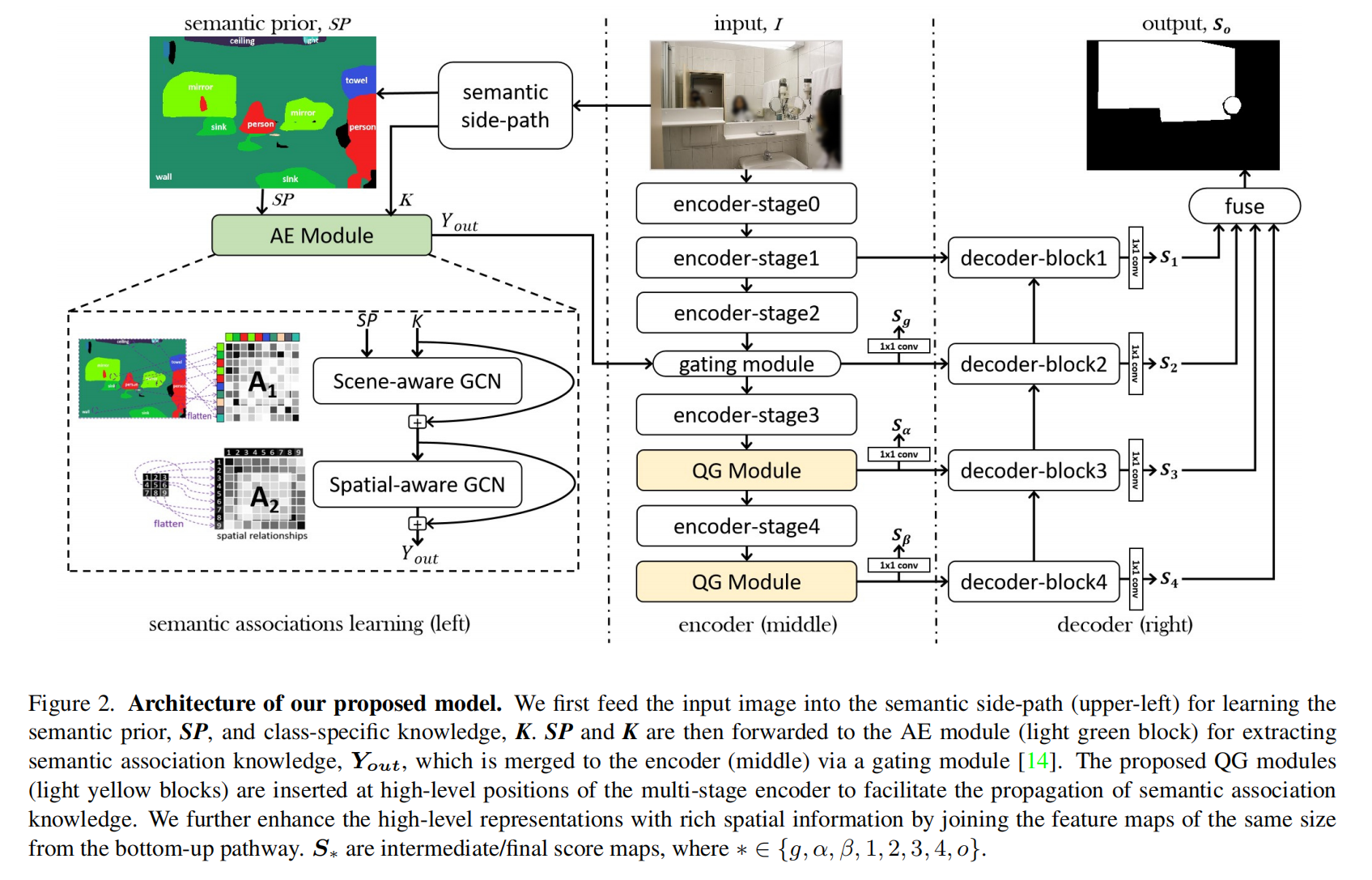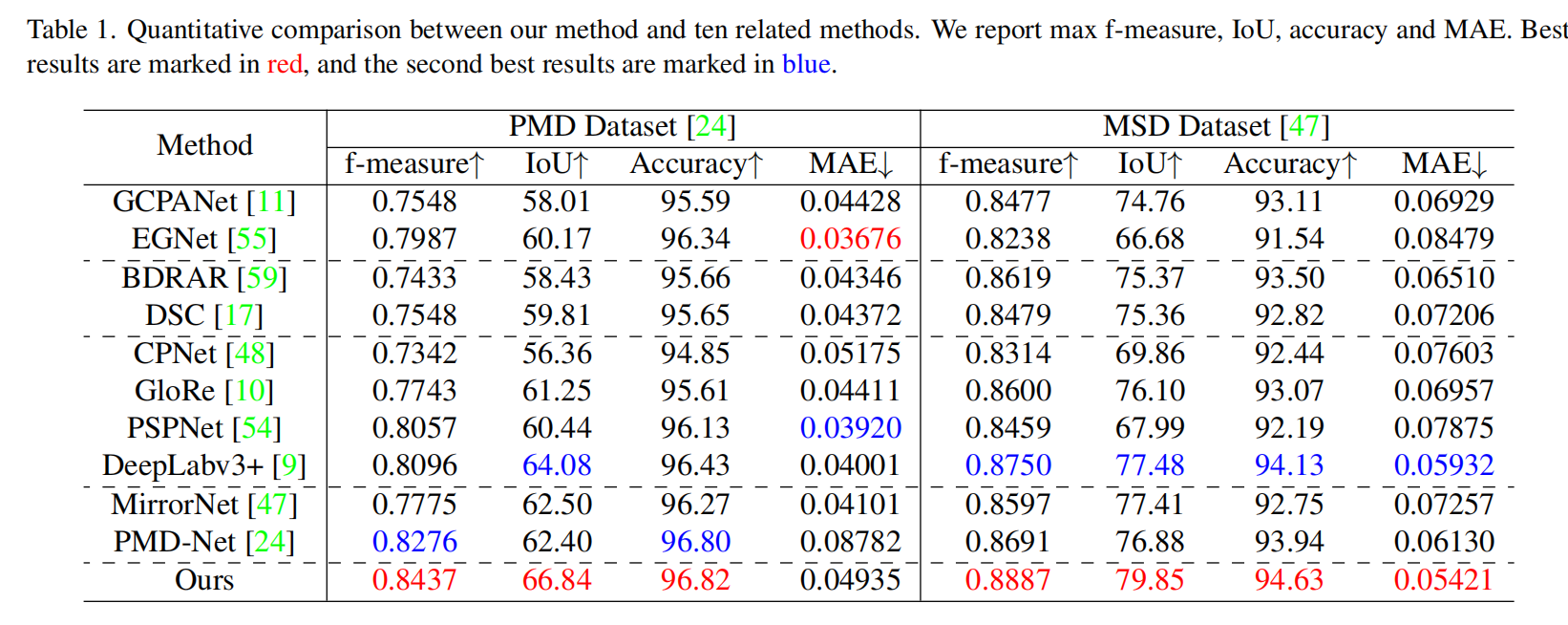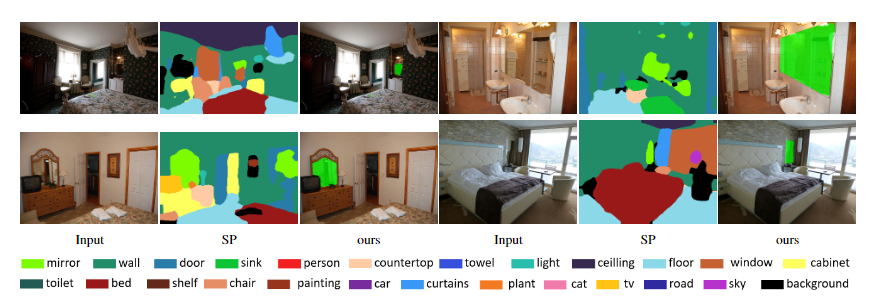Mirrors generally lack a consistent visual appearance, making mirror detection very challenging. Although recent works that are based on exploiting contextual contrasts and corresponding relations have achieved good results, heavily relying on contextual contrasts and corresponding relations to discover mirrors tend to fail in complex real-world scenes, where a lot of objects, e.g., doorways, may have similar features as mirrors. We observe that humans tend to place mirrors in relation to certain objects for specific functional purposes, e.g., a mirror above the sink. Inspired by this observation, we propose a model to exploit the semantic associations between the mirror and its surrounding objects for a reliable mirror localization. Our model first acquires class-specific knowledge of the surrounding objects via a semantic side-path. It then uses two novel modules to exploit semantic associations: 1) an Associations Exploration (AE) Module to extract the associations of the scene objects based on fully connected graph models, and 2) a Quadruple-Graph (QG) Module to facilitate the diffusion and aggregation of semantic association knowledge using graph convolutions. Extensive experiments show that our method outperforms the existing methods and sets the new state-of-the-art on both PMD dataset (f-measure: 0.844) and MSD dataset (f-measure: 0.889).
This codebase depends on the following packages within python3.7+ env:
pillow numpy matplotlib pickle tqdm torch
pydensecrf (for CRF; if you do not use CRF, you can exclude it from your environment)
*tips: pydensecrf can be installed from wheel file using pip "pip install wheel_file_name.whl" Link for downloading pydensecrf whl: https://www.lfd.uci.edu/~gohlke/pythonlibs/#pydensecrf
*where to download checkpoints (inference) and pretrained weights (training):
https://drive.google.com/drive/folders/1URH98GqQas3wyCBVgxLZ3wXhDMxhskC_?usp=sharing
We provide two scripts (demo.py and visual.py) for inference and visualization purpose.
demo.py usage: python demo.py [-h] -c CHECKPOINTS -i IMAGE -o OUTPUT [-nocrf]
visual.py usage: python visual.py [-h] -i IMAGE -m MASK -o OUTPUTWe provide some examples for you to play with (examples\input). Just run the demo.bat (Windows OS platform).
> demo.batwe provide a script (evaluation.py) for evaluation (our results: https://drive.google.com/drive/folders/1URH98GqQas3wyCBVgxLZ3wXhDMxhskC_?usp=sharing )
evaluation.py usage: evaluation.py [-h] -pred PREDICTION -gt MIRRORMASKPATH_TO_TRAINING_DATA
├─DATA
│ ├─MSD
│ │ ├─test
│ │ │ ├─image
│ │ │ └─mask
│ │ └─train
│ │ ├─image
│ │ └─mask
│ ├─PMD
│ │ ├─test
│ │ │ └─_ALL
│ │ │ ├─image
│ │ │ └─mask01
│ │ └─train
│ │ ├─image
│ │ └─mask01
│ ├─RGBD-Mirror
│ │ └─RGBD-Mirror
│ │ ├─test
│ │ │ ├─depth
│ │ │ ├─depth_normalized
│ │ │ ├─image
│ │ │ └─mask_single
│ │ └─train
│ │ ├─depth
│ │ ├─depth_normalized
│ │ ├─image
│ │ └─mask_single
│ └─SemSeg
│ ├─ADE20K
│ │ ├─image
│ │ └─seg
│ ├─COCO
│ │ ├─image
│ │ └─seg
│ ├─NYUD-v2
│ │ ├─image
│ │ └─seg
│ └─SUNDataset
│ ├─image
│ └─seg
@InProceedings{Guan_2022_CVPR,
author = {Guan, Huankang and Lin, Jiaying and Lau, Rynson W.H.},
title = {Learning Semantic Associations for Mirror Detection},
booktitle = {Proceedings of the IEEE/CVF Conference on Computer Vision and Pattern Recognition (CVPR)},
month = {June},
year = {2022},
pages = {5941-5950}
}



